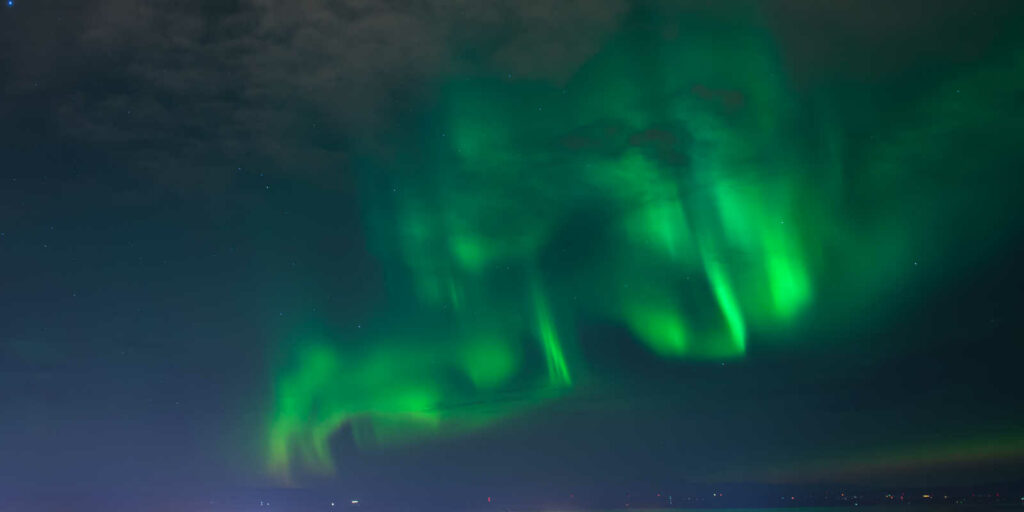
Amazing, breathtaking, extraordinary, fantastic, spectacular… There simply aren’t enough superlatives to properly describe the Northern Lights and how you will feel when experiencing them for the first time. The vibrant colors lighting up the wide northern sky are truly an awe-inspiring sight. The curtains of dancing light ripple across the horizon; folding and unfolding, disappearing briefly, only to reappear as a new shape moments later. As 19th century Austrian explorer Julius von Payer described them: “No pencil can draw it, no colors can paint it, and no words can describe it in all its magnificence.”
Auroras generally begin as a faint band glowing eerily from east to west along the northern horizon. As their intensity builds, the colors and movement begin to increase and they appear to move south. At this stage, they usually resemble curtains stirring in a breeze. At maximum intensity, various shapes will seem to fill the sky with brilliant, luminous color. The most intense displays last about 20 or 30 minutes; the whole cycle may repeat an hour or two later. The multihued spectacle is often incredibly bright and dances across the night sky as quickly as an Argentinian tango.
Fall is the beginning of the prime Northern Lights viewing season in Alaska, which extends from autumn through spring. It may take a few days to catch a display since the lights are as fickle as the weather. It needs to be dark and clear enough to see the stars in order to see the display. Your best chance to see a great display of the lights is near midnight when temperatures are subzero and there isn’t a moon. The Geophysical Institute at the University of Alaska in Fairbanks offers local aurora forecasts.
Fairbanks is the place where the Northern Lights can be seen most reliably but Anchorage is probably the easiest place from which to watch them. If you do choose an excursion to Fairbanks, make sure you’re dressed for the weather. Remember that you might be out in the cold for hours waiting for the best display! Warm ocean currents ameliorate the weather in Anchorage; high temperatures in the winter average in the mid 20s which is significantly warmer than interior areas like Fairbanks or mid-continent cities like Minneapolis. You’ll still want to dress in warm layers but maybe not quite so many.
The shimmery aurora borealis is usually visible over the city of Anchorage for several hours; your ability to see the display of lights will depend on weather conditions and ambient light. Fortunately, there are several great viewing spots near downtown Anchorage. Since you will want to allow plenty of time in Alaska to increase your chances of ‘catching the Lights’, contact us and we will design an Alaskan adventure for you that is as exciting, memorable, and brilliant as the Northern Lights themselves!

 My goal is to simplify travel-planning through an equal exchange process where I acquire your ideas and expectations for your trip relieving you of the worry, hassle, stress and time that accompanies Do-It-Yourself planning.
My goal is to simplify travel-planning through an equal exchange process where I acquire your ideas and expectations for your trip relieving you of the worry, hassle, stress and time that accompanies Do-It-Yourself planning.